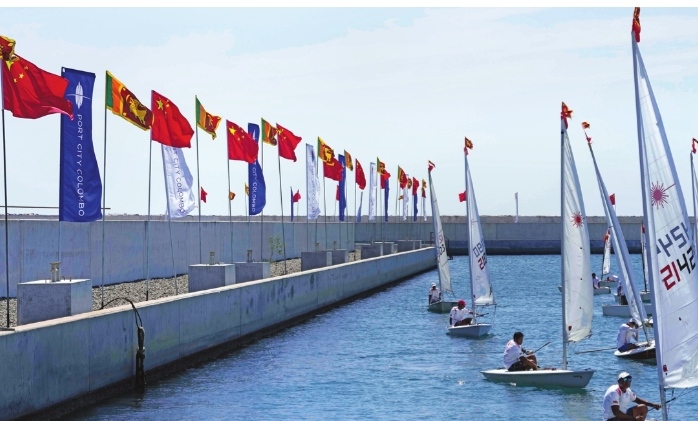The Chinese Debt Trap : China-Sri Lanka cooperation

Chinese and Sri Lankan national flags are seen at Colombo’s Port City during the visit of Chinese State Councilor and Foreign Minister Wang Yi in Colombo, Sri Lanka, on January 9, 2022.
After Sri Lanka declared an economic emergency and asked India for help at the beginning of the year, people of Sri Lanka came to realize the deep debt trap which China had prepared through its Belt and Road Initiative (BRI) and how Sri Lanka had been lured into it.
Sri Lanka’s recent financial distress is the clear result of the high interest Chinese investment in the country. Now the “Chinese debt trap” is clearly visible not only to people in Sri Lanka but also to citizens of Maldives, Nepal, Malaysia and even Bangladesh. Only the Government of Pakistan is oblivious to this debt trap. Public in all these countries are now fully aware of the China cooperation motive.
It was even rumoured that China’s central bank had issued bank notes with a face value of 10,000 rupees in Sri Lanka, which was later refuted by Beijing. Such rumours clearly show that perception wise it is China’s violation of Sri Lanka’s currency sovereignty, one sided beneficial economic and a plunder by China.
No wonder many Western countries, including the US, have been attacking China’s overseas construction projects.
In fact India had been against the BRI right from its inception.
China can never be a good friend and has very selfish economic policies, opaque trade practices. Sri Lanka-China relations have become quite skewed over a period and this is being realized only now.
The news about currency sovereignty went rife earlier in January, coinciding with Wang’s visit to Sri Lanka. One of the earliest was a Twitter news on January 9. It posted pictures of “Sri Lanka’s new 10,000 rupees note” saying it was issued by the People’s Bank of China.
“Wang Yi officially handed over new currency to Sri Lanka during his meeting with [Sri Lankan] President,”. The Twitter claimed that the “new bank note” can be used in Sri Lanka and described the Chinese-invested projects of Colombo Port City and Hambantota Port as “Chinese territory.”
Mainstream American newspapers and magazines, including The New York Times, the Wall Street Journal, Foreign Policy and The Atlantic, publish articles about the “China debt trap.” Though Rajapaksa said in an official statement in October 2020 that “constructing a port in Hambantota is an idea of Sri Lanka and not China’s.” He also added that the project has a vast potential for generating income and employment opportunities for his country. He realized his follies only later project
Indian always regard South Asia as India’s sphere of influence. So naturally it will be wary of the cunning outside forces developing relations with other countries in the region. The history of past 400 years is there for all to see. However SAARC countries are now a determined lot and will not let history repeat itself.




